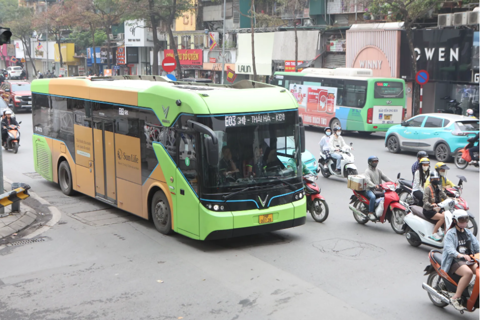Hanoi’s famed Metropole a treasure trove of history
The Hotel Metropole Hanoi holds invaluable historical significance in the development of the capital city.
Hanoi, which was a stunning jewel in the French Colonial Indochina crown, has gone through enormous changes in the last decade since Vietnam swung open its doors to tourism.
As a prominent fixture in the heart of Hanoi since 1901, the Hotel Metropole has coincided with Hanoi’s history, through turbulence and economic growth.
Two men, one vision
The story of this legendary building began in 1898 when two French men, Émile Dumoutier and André Ducamp, met in what was then the capital of Indochina.
Dumoutier, who described himself as an anti-imperialist, was acting as Tonkin’s chief education officer. In this role, he established more than ten schools to introduce aspects of the French way of life without damaging indigenous culture.

Ducamp had been investigating a range of investment opportunities from Hong Kong to the French dependencies in India.
Life was good for the men and Dumoutier was already the owner of a row of houses in downtown Hanoi.
He invited Ducamp to join in a new enterprise that both of them knew little about. After a short discussion, the two men got excited by the mere thought of it: Dumoutier provided the houses covering 3,140 square metres and Ducamp put up half a million francs in cash.
That is how the two men would come to build a first-class hotel fit for any of the world’s major cities.
A phoenix from the swamps
Towards the end of the 19th century, Hanoi, the city of lakes, grew rapidly. The French drew up detailed plans for a new town to be laid out beside the old one. Dumoutier had access to the blueprints for Hanoi, which were kept in the government’s planning division.
At that time, Henri-Rivière Boulevard was no more than a narrow track running through marshlands and lakes. Dumotier knew that before long, it would be the new heart of the European settlement in Hanoi.
Ever the opportunist, he quickly snapped up two available lots.
As the capital of Indochina, Hanoi was receiving an increasing number of visitors who had to be put up in official guest houses, missions or private homes.
They had the Grand Hôtel near the ‘little’ lake or the Hanoi Hôtel in rue Paul Bert and a smattering of small hostels. However, none of these were truly elegant or designed to meet the needs of the international traveler.
Dumoutier was about to change this. He wanted the style of the Galle Face Hotel in Colombo with its huge ballroom and the Adelphi in Singapore.
With just 500,000 francs, the two men were able to get it up and running. On the spot where 10 years earlier a small, muddy lake had provided an ideal breeding ground for mosquitoes, a huge hotel took shape.
Its façade spanned over 80 metres, making it the largest hotel in Indochina or, as the Revue Indo-Chinise remarked on March 18, 1901, “un immense hôtel”.
In the summer of 1901, the Grand Hôtel Métropole Palace opened its doors to the curious population of Hanoi. A British visitor, Alfred Cunningham, who was one of the Métropole’s first guests, had written in his book, ‘The French in Tonkin and South China’, “The hotel is elegantly furnished, each bedroom has a bathroom and there is a public hall, salon de conversation, reading room. The sanitary arrangements are perfect, and the general accommodation leaves nothing to be desired.”
Limelight
The hotel soon became the rendezvous point for colonial society in the first half of the century. During the boom years of the 1930's, Hotel Metropole was the social venue for all occasions, including the honeymoon venue for Charlie Chaplin after his secret wedding to Paulette Goddard in Shanghai.
Following Vietnamese independence, the new government opted to maintain it as the official hotel for visiting VIP’s. During and after the war years, it became a base for press and diplomats.
90 years after it had risen so gloriously from the swamps of ancient Hanoi, the Thống Nhất (or Reunification Hotel) was closed for the face-lift of the century. As an integral part of Hanoi’s history, the hotel has played host to numerous Kings, heads of state and celebrities since its re-opening in March 1992.
A new morning
The hotel is divided into two wings. The historic Metropole Wing was inspired by classic French architecture with a hint of local touches. The more contemporary Opera wing, which was completed in 2007, was renovated to create a harmonious blend between the historic and modern elements of the hotel. Great care was taken to respect the rich heritage of the site while installing state-of-the-art technology.
The Opera wing is ready to return to its position as a popular address for celebrities, leisure tourists, businessmen and politicians alike.
The centenary Hotel Metropole Hanoi has once again been recognized by two renowned travel publishers: Condé Nast Traveler US and Travel & Leisure, as one of the best hotels in the world.








